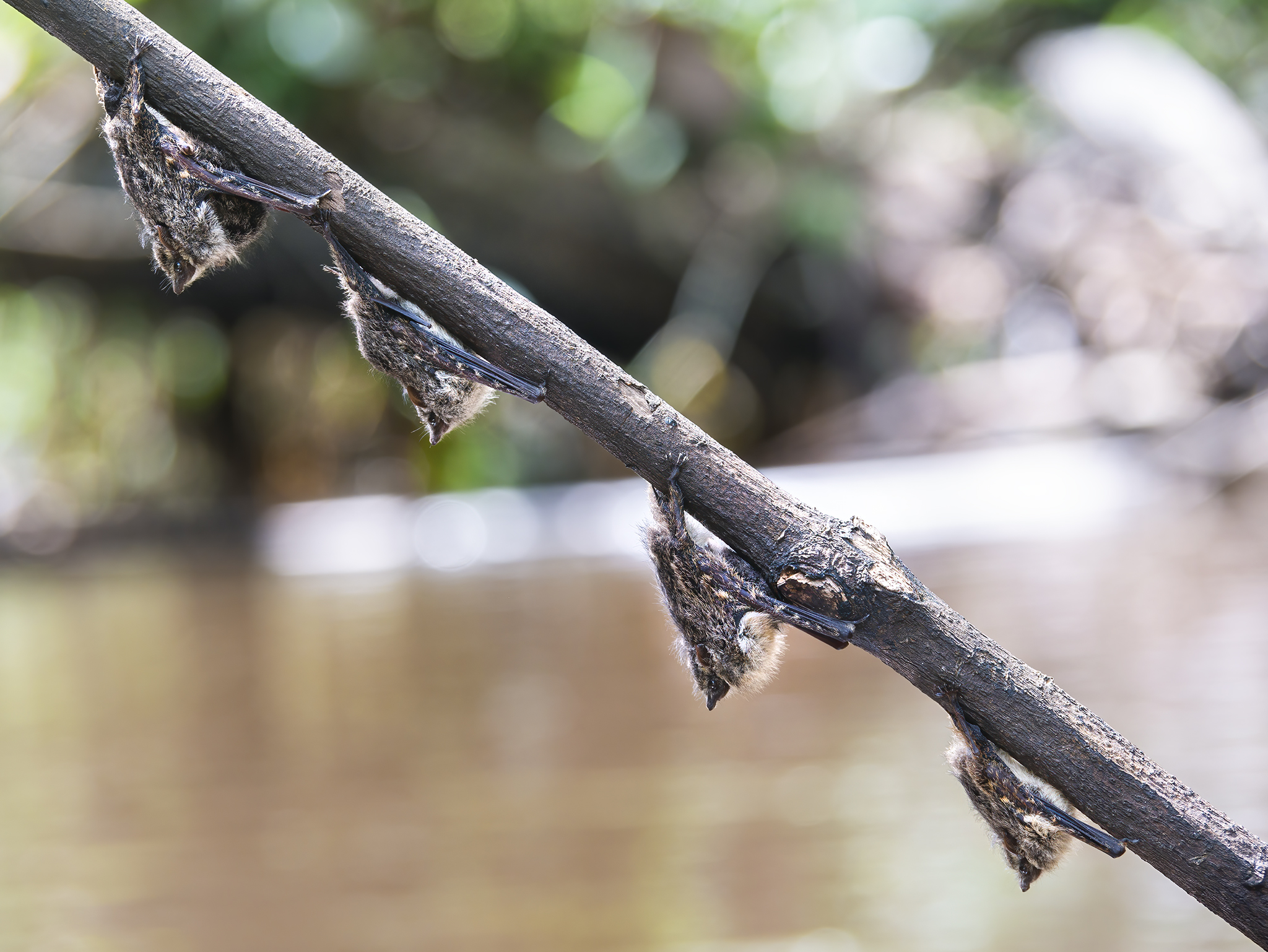In August 2022, I took a tour through Pacaya Samiria National Reserve in north-eastern Peru. For six days I floated around its maze of watercourses in a dugout canoe with Marcel, my guide. Accommodation took the form of small wooden huts, or makeshift camps under a tarp in the middle of the jungle. After 30 years spent guiding in the park, Marcel’s knowledge was immense. While he barely spoke a word of English, it was clear that he could identify just about every plant and animal in his native tongue. He navigated the tributaries with an innate sense, despite every turn looking exactly the same as the last one. If you’d left me to find my own way home, I’d have almost certainly become piranha food.
Pacaya Samiria is one of the most biodiverse regions I have ever been to, and many of the photos we’ve shared in recent weeks were taken there. I swam with pink river dolphins, spotted snakes and caiman by night, and encountered my first sloth (a creature I would never have seen in a million years had it not been for Marcel’s keen eye).
Some of the more curious creatures that we continuously encountered, however, were of the winged mammalian variety. Quite often, as we paddled past half-submerged logs and beneath overhanging branches, the peaceful tranquility of the rainforest would be abruptly broken by a sudden burst of furious flapping. You had to be careful not to topple out of the canoe with surprise.
The culprits? These cute little Proboscis Bats!

Named after their noticeably noteworthy nose, Proboscis Bats are a species of microbat that inhabits much of South and Central America.
We did a big post on bats a little while ago where we covered the main differences between megabats and microbats, but in a nutshell… Megabats – big chonky fructivores that are also called flying foxes. Microbats – little teeny insectivores which hunt via echolocation. Megabats might also be primates but that makes evolutionary biologists angry so we don’t really talk about it.
Anyway, back to Proboscis Bats. These little guys are only about 6cm long and weigh as little as 4 grams – about the mass of a single piece of A4 paper. They’re so small that they’ve been known to occasionally fall prey to the enormous Orb-Weaver Spiders that inhabit the Amazonian jungles, which can be double the size of the bat if measuring in terms of leg span.

Proboscis Bats are most commonly identified by the unusual way that they perch during the day. In groups of five or so individuals, they will arrange themselves nose-to-tail in a carefully choreographed line on the underside of a tree branch. Their camouflage is extraordinary, typically looking like nothing more than small knobbles in the wood. Indeed, it took several instances of almost running into them and scaring them away before I finally managed to spot a group of them from a distance and get some decent photos.
By night, Proboscis bats hunt bugs with echolocatory clicks, while during the day they become one with the jungle, blending seamlessly into their arboreal hideaways. Undoubtedly, these magnificent mammals have found their ecological niche, and wholeheartedly embraced it!
–
Proboscis Bats (Rhynchonycteris naso), Reserva Nacional Pacaya Samiria, Peru


